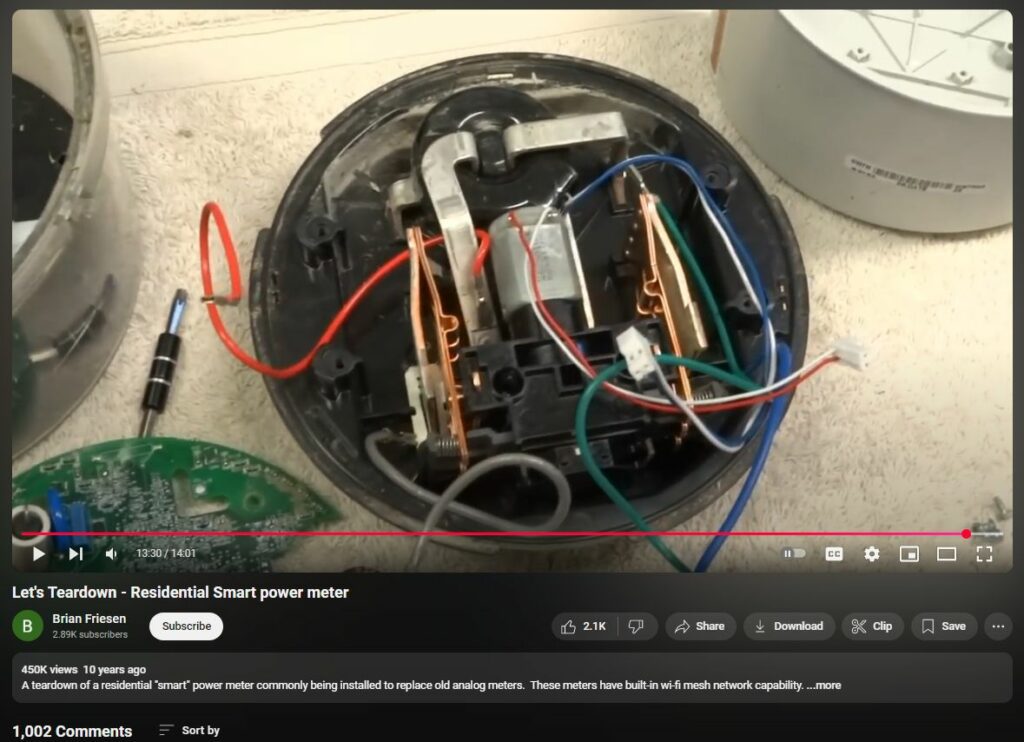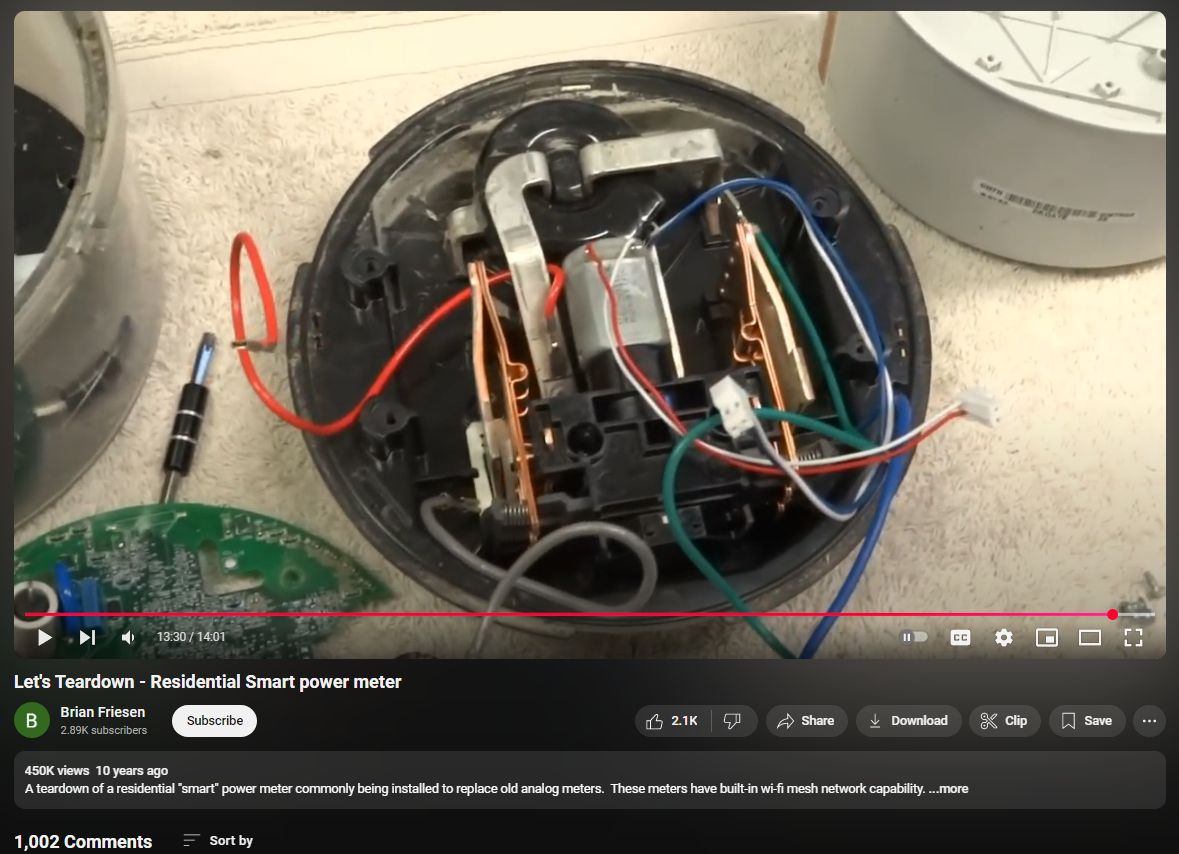Smart Meter Teardown
It’s a Landis-Gyr AXR- SD ….. The AXR denotes this is NOT an RF transmitting meter… The SD stands for Service Disconnect. So this meter has a built in disconnect means depending on how the software is set up. Disconnect by overload, disconnect remotely. The RXR series are the ones that operate on 900 MHz. or 2.5 GHz.

Electrical Grid Power Meters and UL Safety Certification
In the U.S., smart meters are not explicitly required to have UL (Underwriters Laboratories) certification, but they must comply with various safety and industry standards, which may include UL standards.
Regulatory & Safety Requirements for Smart Meters in the U.S.:
- ANSI C12 Standards – Smart meters must meet ANSI C12.1, C12.10, C12.20, and C12.22, which cover accuracy, communication protocols, and data security.
- FCC Compliance – Since smart meters use wireless communication, they must comply with FCC Part 15 and Part 18 for electromagnetic interference (EMI).
- NIST Guidelines – The National Institute of Standards and Technology (NIST) provides a framework for interoperability, cybersecurity, and safety.
- State & Utility Regulations – Different states have specific safety and installation standards, often set by public utility commissions (PUCs).
- UL Certification (Optional but Common) – Many smart meters are tested against UL standards, such as:
- UL 2735 – The UL safety standard for electric meters, ensuring protection against electrical faults, fire hazards, and physical durability.
- UL 61010-1 – General safety requirements for electrical equipment.
- UL 60950-1 / UL 62368-1 – Safety standards for IT and communication equipment.
Bottom Line
Smart meters do not legally require UL certification, but many manufacturers seek UL 2735 certification or other relevant UL listings to meet utility and state safety requirements. If you’re concerned about a specific model, you can check the utility’s documentation or the UL database.
